Reframing GHIRLANDAIO Madonna & Child
Posted: 28 Nov 2023 by PML
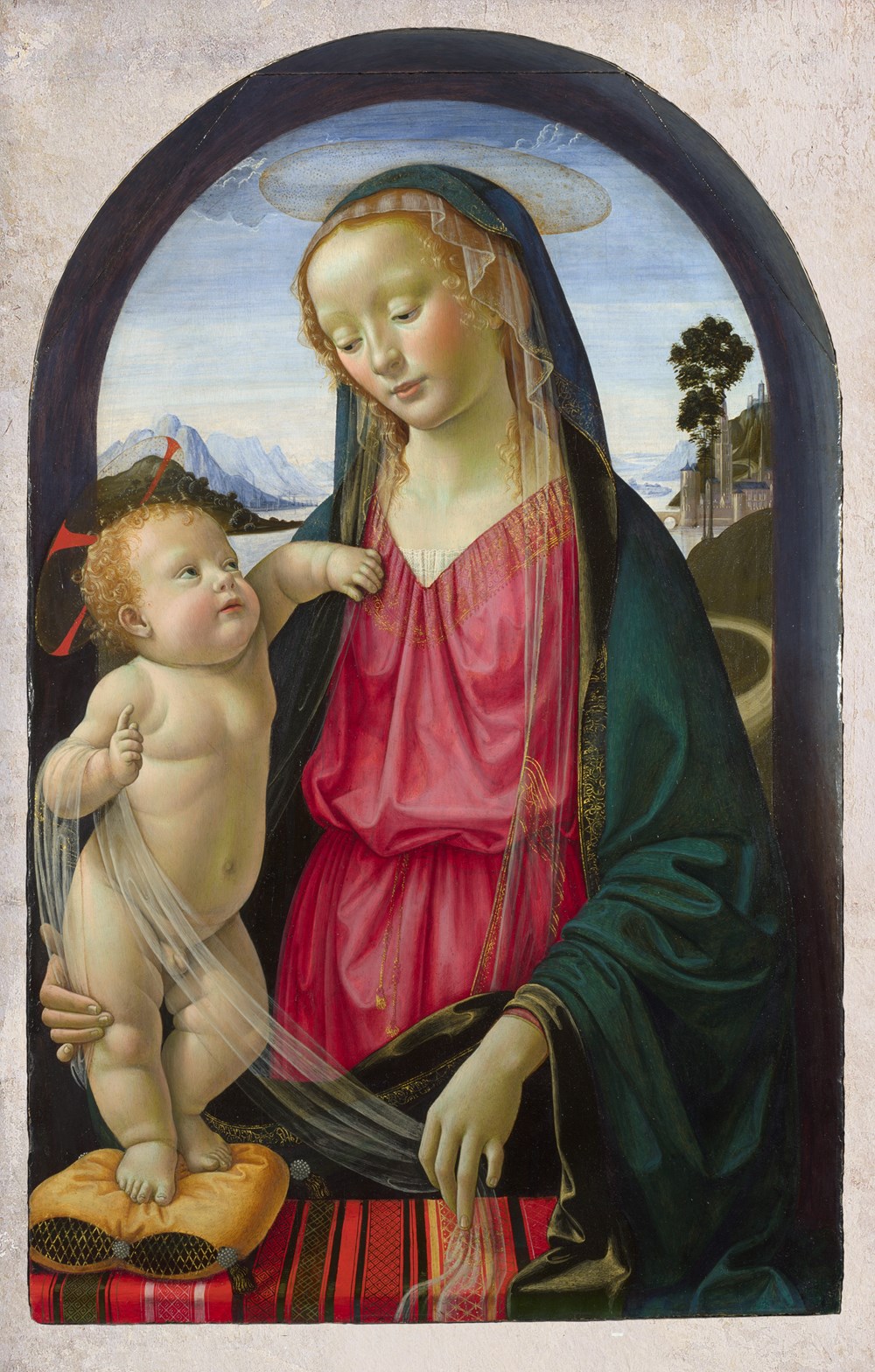
The National Gallery possesses a particularly tender and moving painting of the Madonna and Child by Ghirlandaio. It has a curved, segmental top, and an integral painted trompe l’oeil border giving the effect of the inside of the arched niche in which the two figures stand, which has made it difficult to frame – even in an arched version of a conventional frame.
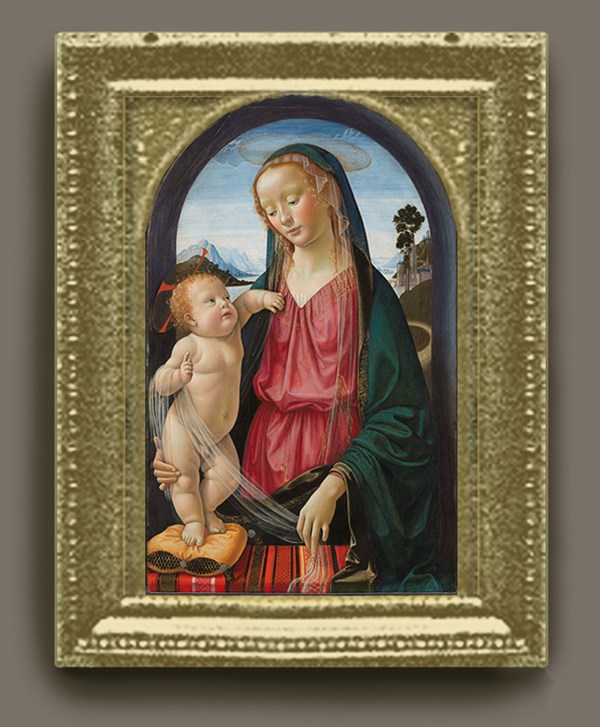
When it first entered the Gallery in 1924, it had a Victorian moulded frame with spandrels inserted in the upper corners, and a relentlessly patterned surface which covered the spandrels as well. It was very much of its time, and far more suitable for a secular portrait.
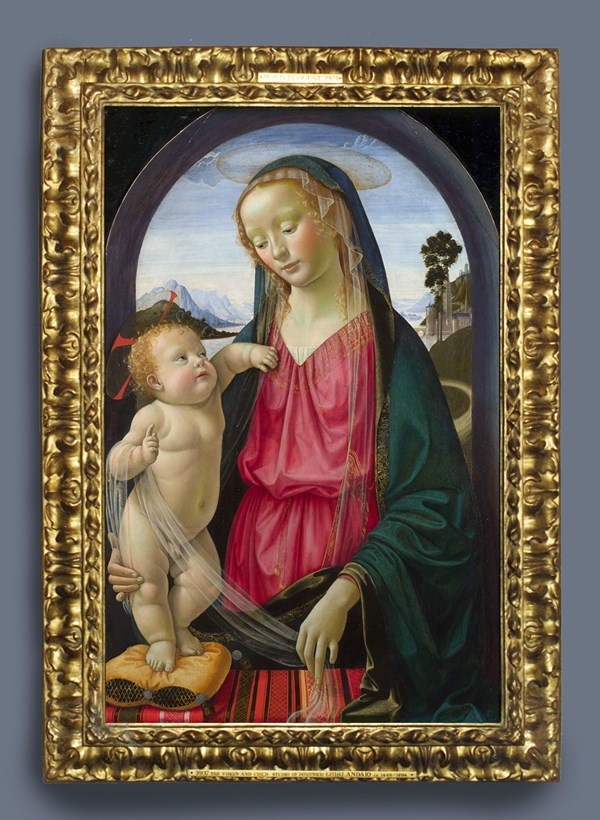
In the 1960s an antique Bolognese frame was found for it, but this was rectilinear, and two centuries later than the painting - a Baroque 17th century design carved with large, curvaceous acanthus leaves which were completely out of scale for such a delicate and evanescent composition. The arched top was dealt with by fitting two black spandrels, which only emphasized the disparity between painting and frame.
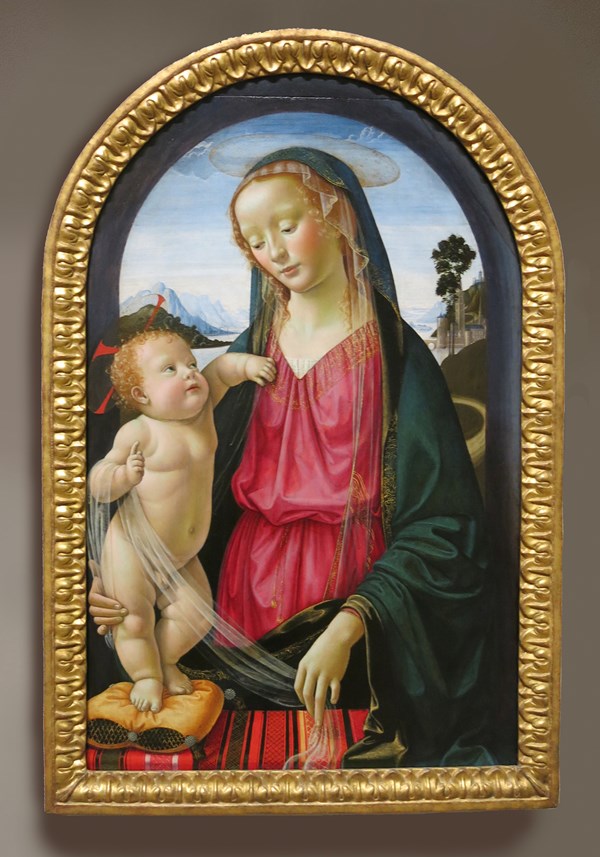
Thirty years later, a frame was made for it in the Gallery workshop, modelled on the integral carved moulding attached to a 15th century portrait in the collection by Baldovinetti. The top was changed to a curved arch, and the leaf ornament altered from the smooth-edged leaf of the Baldovinetti to a lobed, acanthus-like leaf. However, this solution still made no concession to the architectural composition of the three-dimensional niche within which Mother and Child stood; and the slender carved moulding – although the perfect setting for Baldovinetti’s coin-like painted profile – was in no sense spacious enough nor sufficiently like an altarpiece frame to present such a subject in a manner which would convey its sacred context.
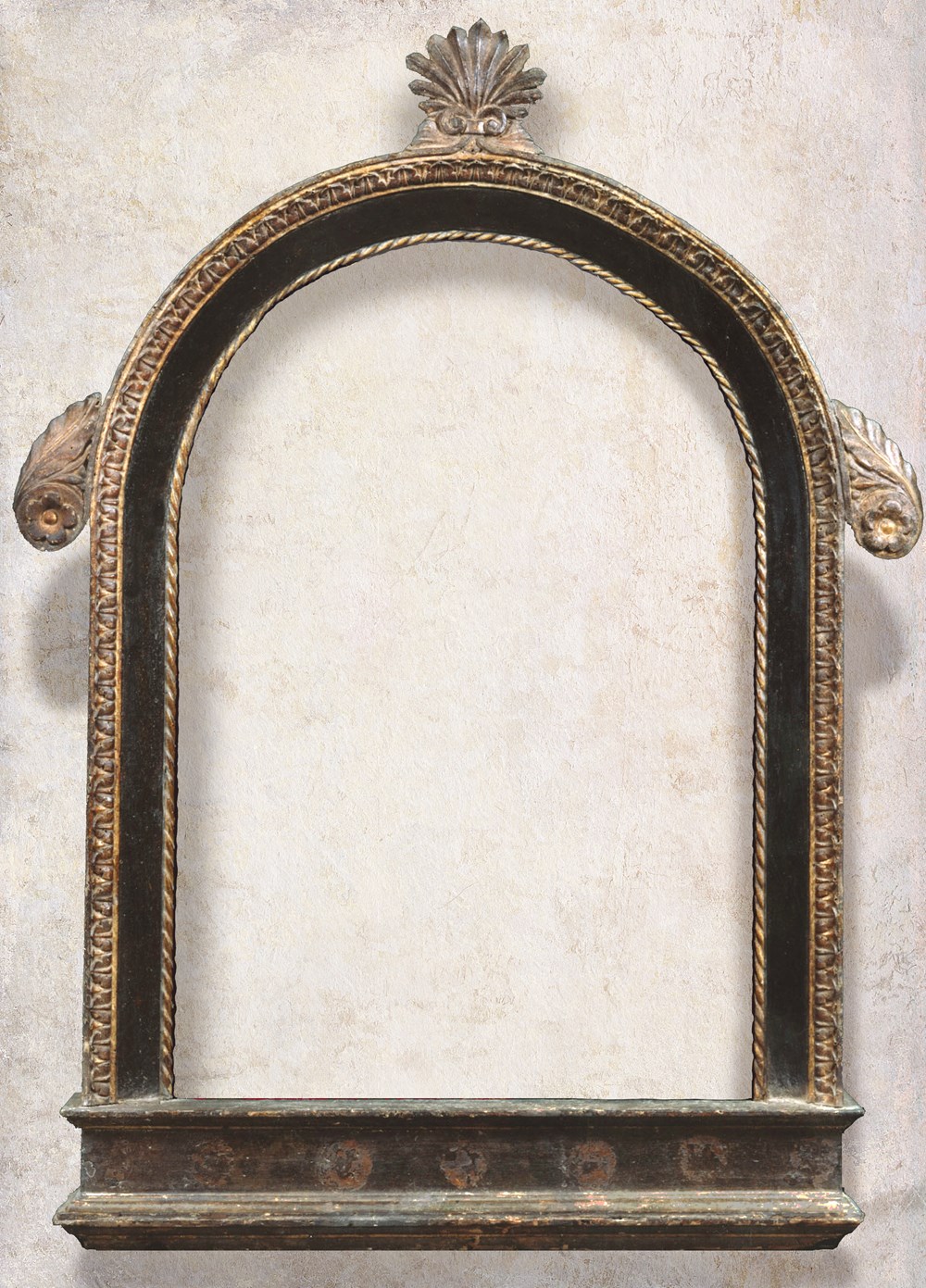
The answer was found in the Paul Mitchell collection: a late 15th century Italian altarpiece frame, with a round-arched top, a canted opening decorated with faded gold stars on a midnight ground, and a plinth with predella panel below. It has three acroteria – a palmette at the top, shaped like a burst of light or of flames, and two roses with leaves at the spring of the arch.
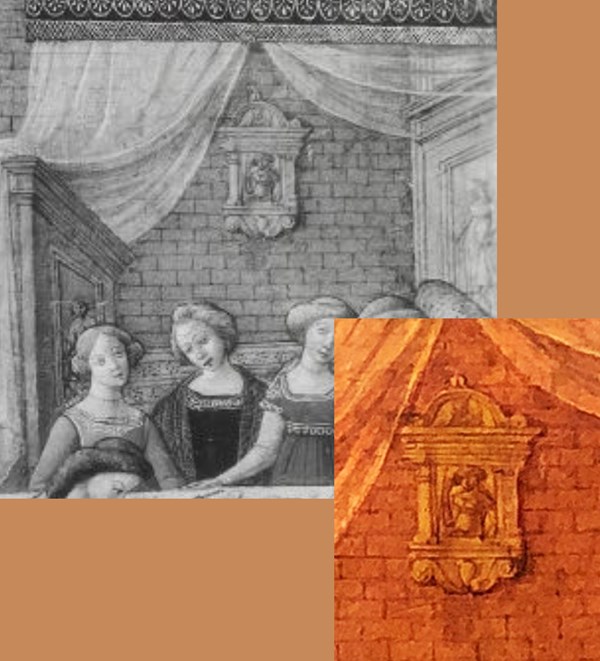
This type of frame seems to have been designed specifically for domestic altarpieces containing images of the Madonna and Child, and hanging in a bedchamber or private devotional space. Sacred paintings for the home (above, a Pietà), acquired with settings in this style which echoed elements of church furnishings and included symbolic motifs, were fashionable and quite common for a period in the last third of the 15th century and into the 16th. They were given to gently-born and wealthy mercantile wives to encourage Madonna-like virtues, and were also supposed to ensure the conception and birth of beautiful, morally upright babies by continual contemplation of the Christ Child. Now, however, the arched frames in particular are rarely on the market, and the chance to acquire an empty version provided a happy solution for framing the Ghirlandaio much more appropriately.
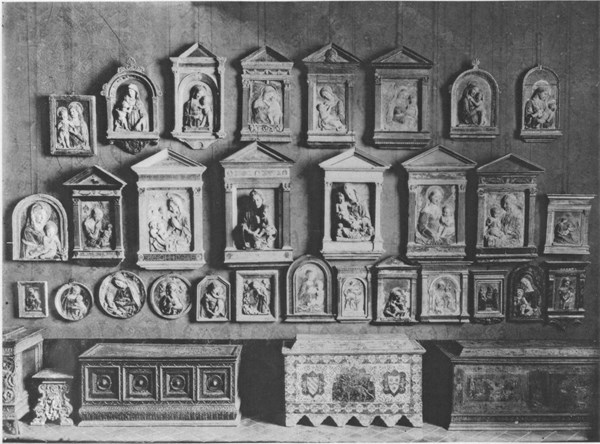
This style was also used to frame relief sculptures of the Madonna and Child: photographs of the dealer Stefano Bardini’s antique shop and gallery show several marble or stucco reliefs in similar arched frames, with and without acroteria – although (like much of Bardini’s stock) not all of them may retain their original appearance, having been altered or put together from elements of different frames. They may also have been repainted and regilded, potentially losing the inner starry frieze, or having it over-emphasized.

Three Madonna panels by Francesco Botticini survive in their arched frames, although they may also have had the starry panels renewed or refreshed. The variously shaped mouldings or larger aprons below the predella demonstrate that these pieces were intended to be hung on the wall (rather than standing on a table, chest or altar), often facing the bed, and were frequently designed with a wide flat sill for offerings, small vases of flowers, and candles.
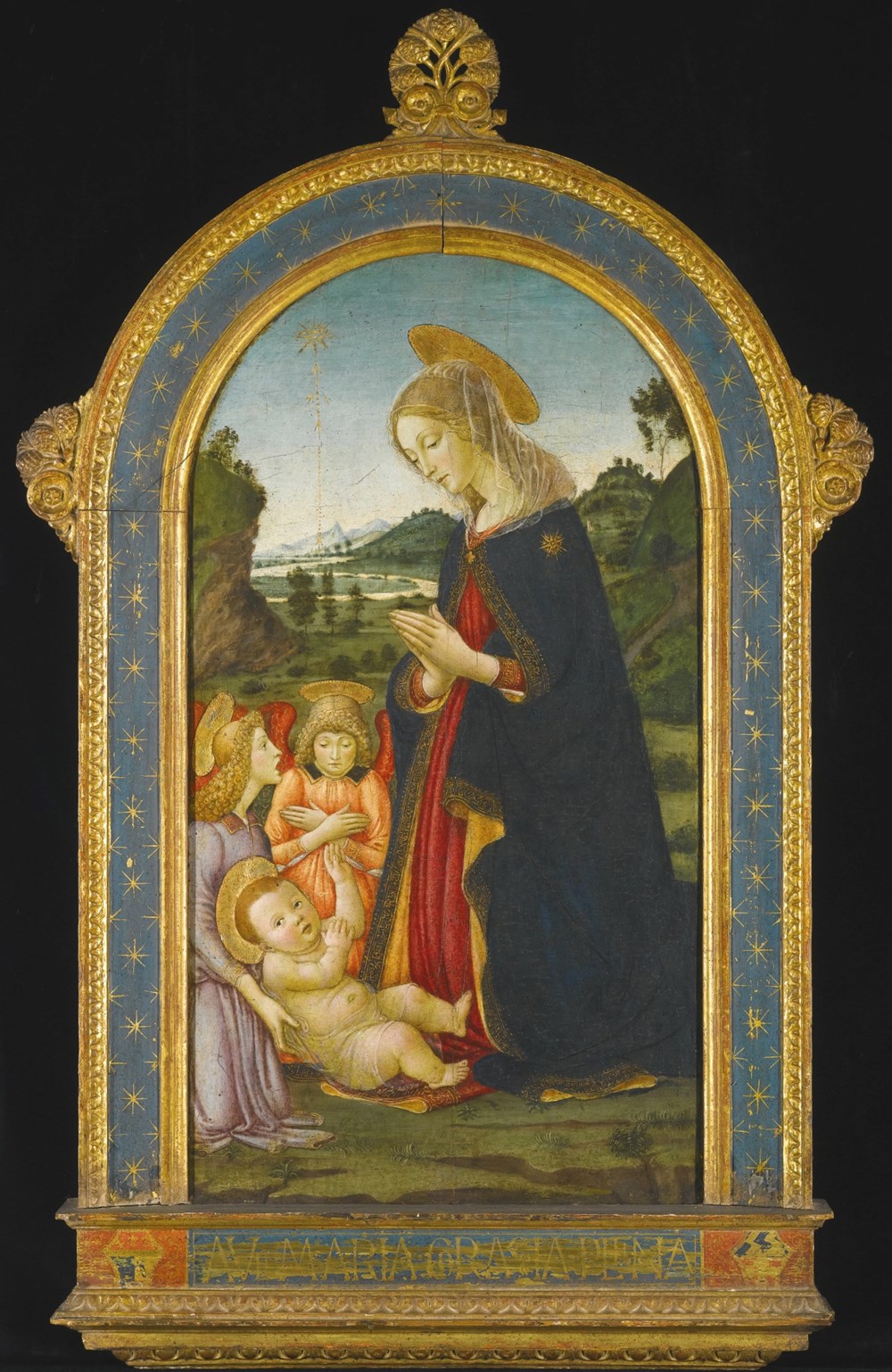
The stars symbolize the Virgin (Mary, Star of Ocean), whilst the roses of the side scrolls are also attributes of the Virgin. In the frame of the Botticini immediately above, the roses have pine cones above them, and the acroterion at the top centre is made up of pine cones instead of a palmette. This stands for the renewal of life, and thus resurrection and eternity, and points towards the gift of salvation which Christ was born to bestow on humanity; in this way the frame provides further meaning beyond what is realized in the painting.
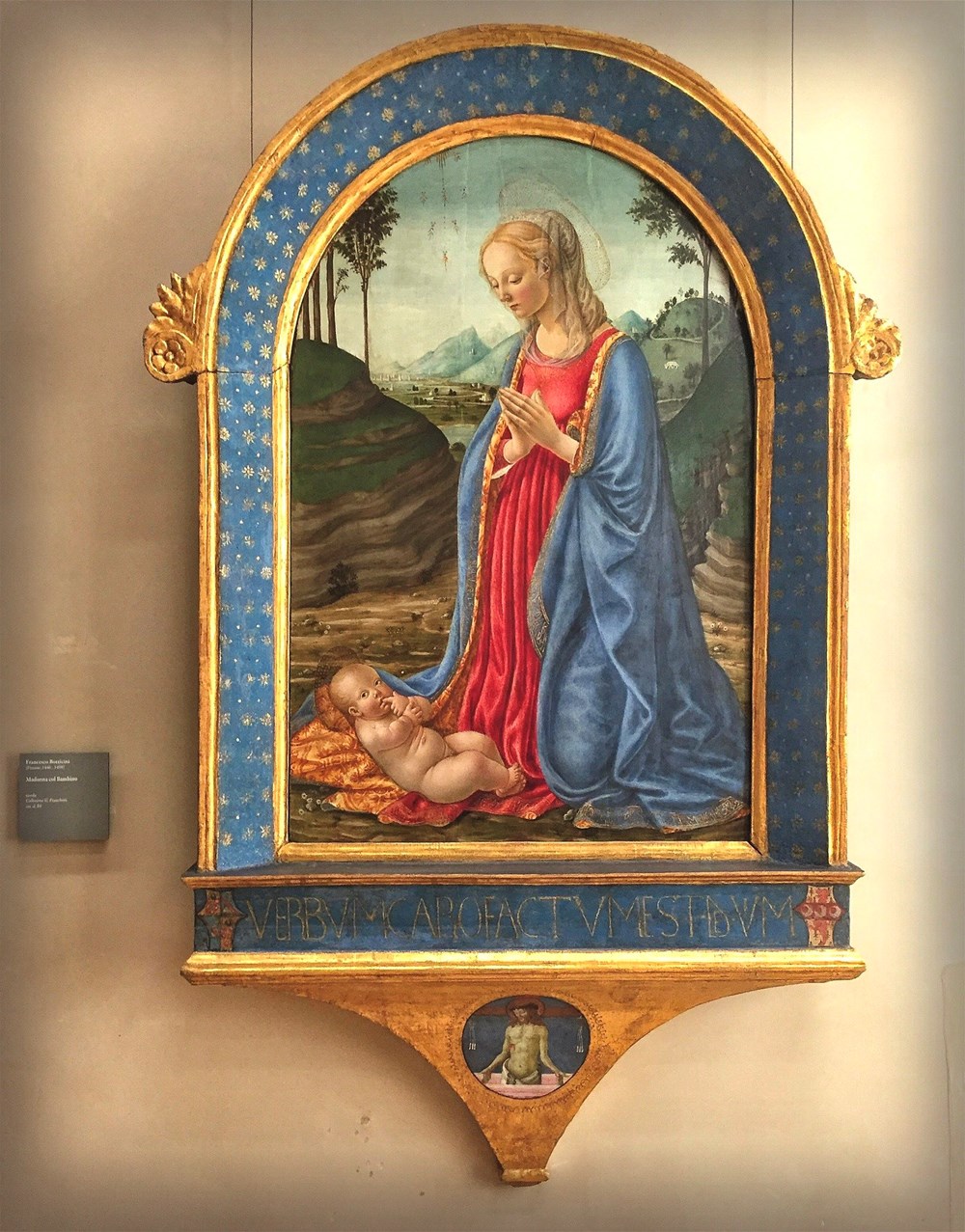
The predella panel might be inscribed: the first Botticini shown above has the phrase ‘Verbum caro factum est’ (‘The Word was made flesh’), the second has ‘Ave Maria gratia plena’ (‘Hail, Mary, full of grace’), and the last of the three has ‘Verbum caro factum est de vi[rgine] M[aria]’ (‘The Word was made flesh of the Virgin Mary’).
The frame given to the National Gallery’s Ghirlandaio is unusual for having had ornamental paterae glued to the predella, rather than an inscription - although these were almost certainly symbolic in form, either carved and gilded roses or stars. It is also unusual for its very deeply canted frieze to the arch, and the width of the flat sill.
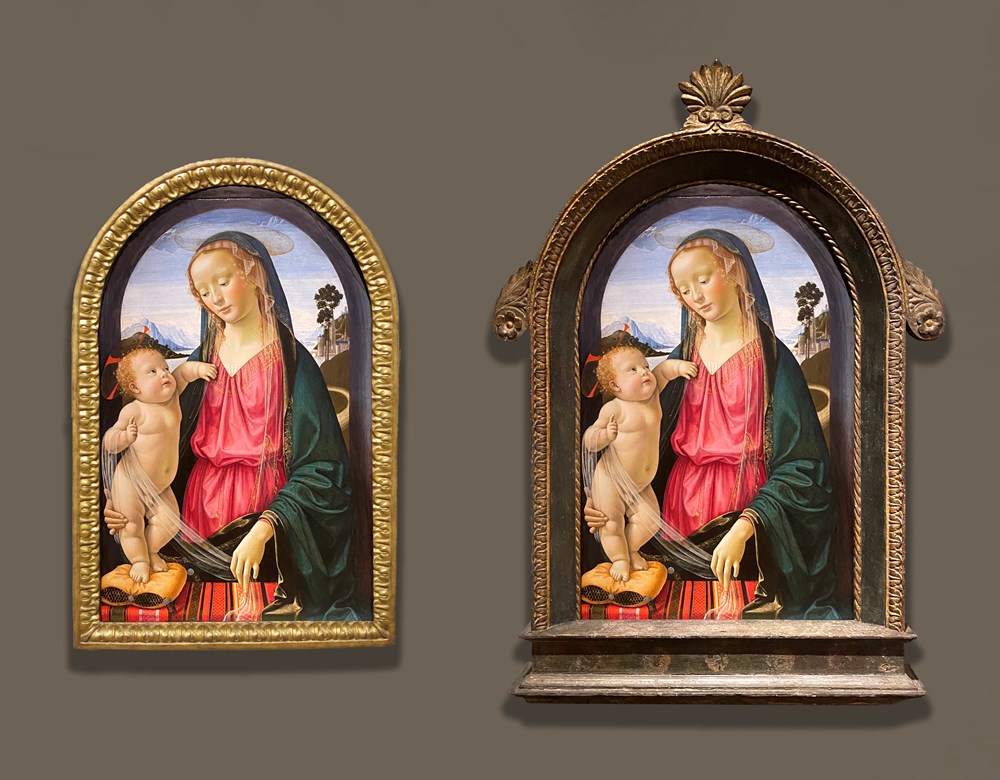
The effect which it has had on the painting is profound; the illusionary reflected light painted on the right-hand side of the integral arch beside and behind the figures is now much more apparent, and gains meaning: the whole integral arch itself has become a continuous part of the frame, appearing as the inside of the arched window niche. The figures now have realistic volume and stand in a receding space, with greatly increased and believable depth. This is the power of a frame; it can cause a painted vision of celestial figures to seem to the worshipper as if appearing in the real temporal world, and as if real themselves.
Categories
- Articles on multiple aspects of European frames
- Recent framing projects undertaken by Paul Mitchell Ltd
